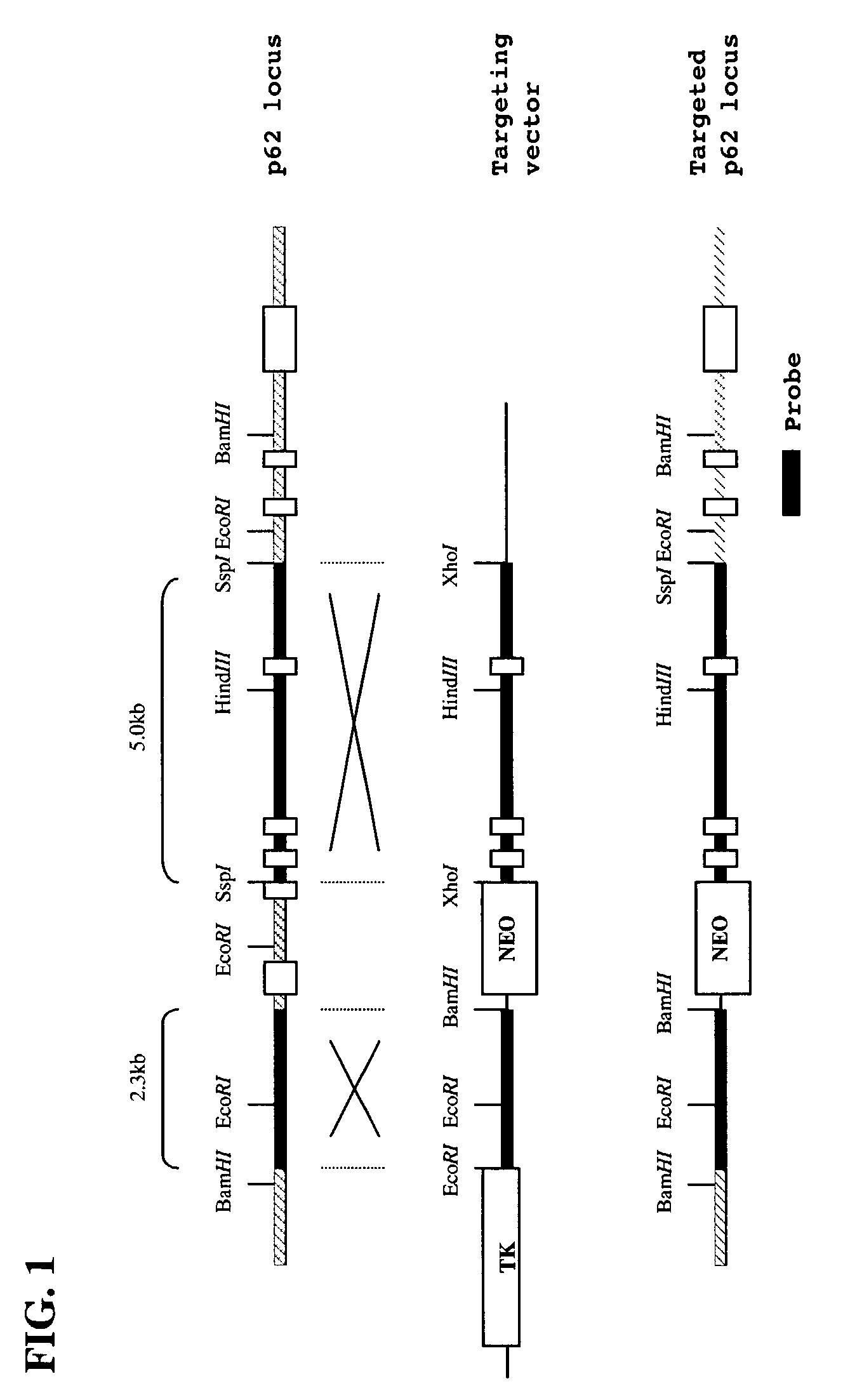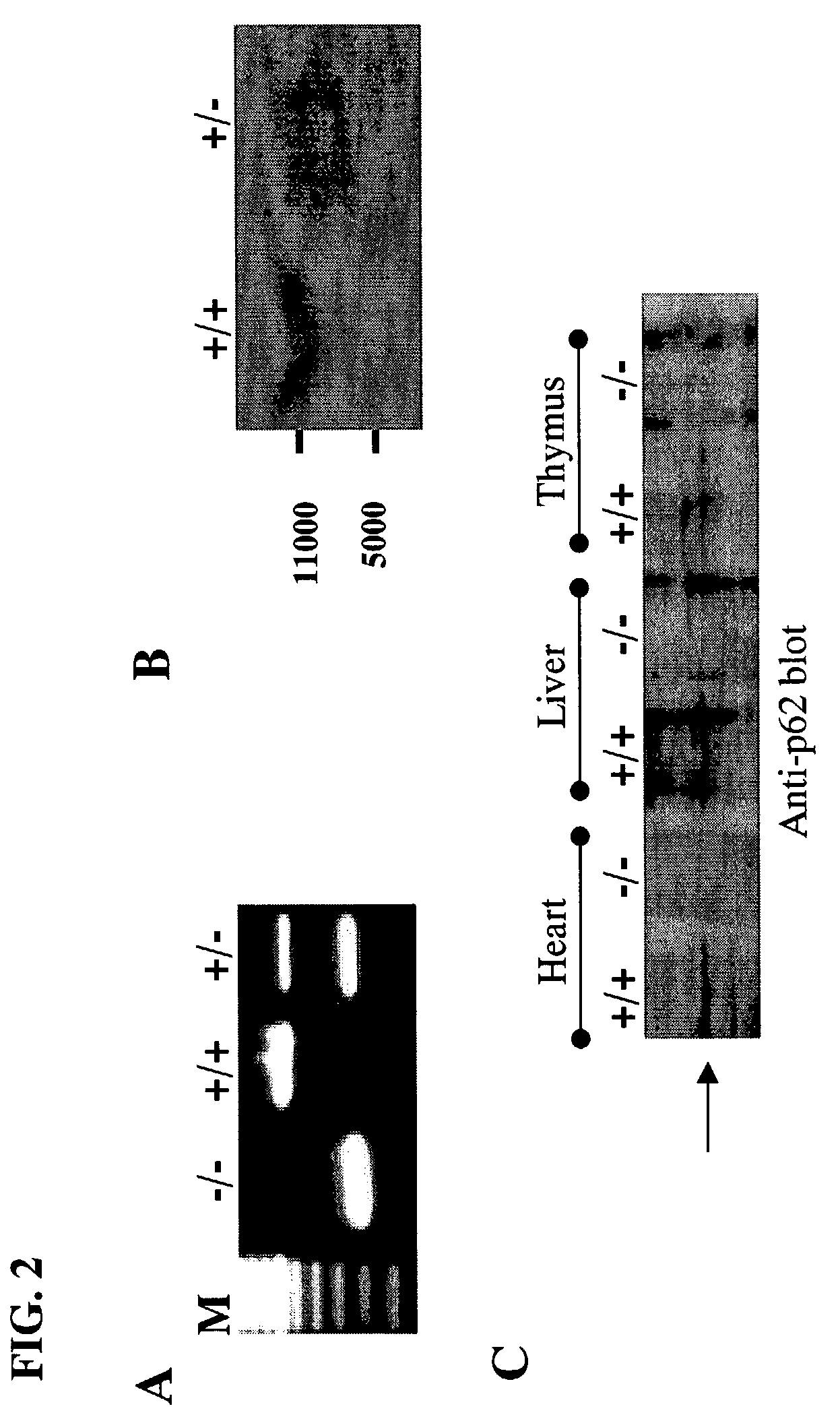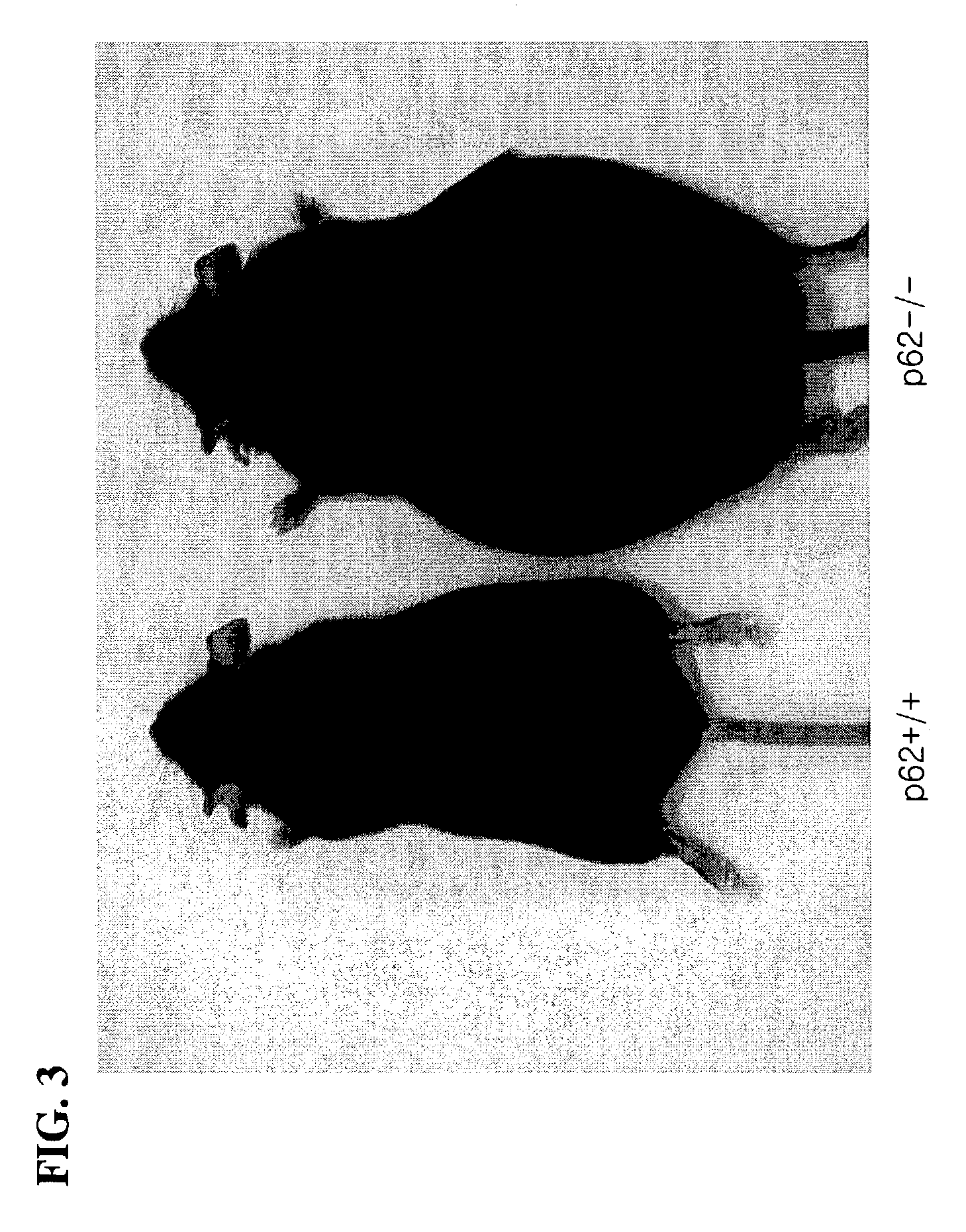Role of p62 in aging-related disease
a technology of aging-related disease and p62, which is applied in the direction of peptides, drug compositions, metabolic disorders, etc., can solve the problems of many health problems, somatic damage, and become a significant human health problem
- Summary
- Abstract
- Description
- Claims
- Application Information
AI Technical Summary
Benefits of technology
Problems solved by technology
Method used
Image
Examples
example 1
Preparation of p62 Knockout Mice
[0280]A. Isolation of a p62 Genomic Clone
[0281]The human p62 gene was isolated as shown in U.S. Pat. No. 6,291,645, which is incorporated by reference in its entirety for its disclosure of the cloning and sequencing of the p62 gene. Genomic DNA clones corresponding to p62 locus in mice were cloned from a RPCI 22 mouse BAC library prepared from mouse strain 129 / svEvTACCfBr (Invitrogen).
[0282]B. Preparation of p62 Knockout Targeting Vector
[0283]To produce a null allele of p62, a gene targeting vector was prepared as shown in FIG. 1. p62 genotypic analysis of litters through PCR analysis of litters derived from heterozygote intercross, as well as through Southern blot and immunoblot analysis of extracts from wild or null p62 mice organs show that the targeted gene was disrupted. The targeting vector was constructed by inserting a 2.3 kb EcoRI-BamHI amplified from the 5′ end of the p62 genomic clone into EcoRI-BamHI site of pPNT. A 4.0 kb SspI fragment de...
PUM
| Property | Measurement | Unit |
|---|---|---|
| concentrations | aaaaa | aaaaa |
| temperature | aaaaa | aaaaa |
| temperature | aaaaa | aaaaa |
Abstract
Description
Claims
Application Information
 Login to View More
Login to View More - R&D
- Intellectual Property
- Life Sciences
- Materials
- Tech Scout
- Unparalleled Data Quality
- Higher Quality Content
- 60% Fewer Hallucinations
Browse by: Latest US Patents, China's latest patents, Technical Efficacy Thesaurus, Application Domain, Technology Topic, Popular Technical Reports.
© 2025 PatSnap. All rights reserved.Legal|Privacy policy|Modern Slavery Act Transparency Statement|Sitemap|About US| Contact US: help@patsnap.com



